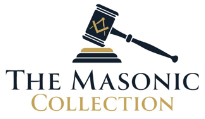
One of the most frequent targets for conspiracy theories is the Freemasonry. In the past few decades, Freemasonry has grown to be more distinguished and noticeable in many local communities, partly as a result of the openness of the brotherhood. The regular coverage the organization receives, particularly when it comes to their charitable programs, is also causing people to gain interest about the organization. The countless books and movies that use Freemasonry or Mason-related things, like their regalia, add to this increased popularity. However, despite the growing visibility of the organization, there are still a lot of myths surrounding the brotherhood. Here are three of the most common myths about Freemasonry that has been debunked.
Myth #1: Masonic symbols are all over the place.
While it's true that Masonic symbols are far from lost, historians believe that they are not everywhere as conspiracy theorists would often say. Freemasonry is rich with symbols, emblems, and icons, and even their regalia have different classifications and meanings. And while many of these symbols are ubiquitous, they're not entirely unique to the brotherhood. The pentagram, for instance, is significantly older than the Freemasonry and just attained its occult connections only in the late 19th century, centuries after the Masons had started to use the symbol.
Myth #2: Freemasons worship the devil.
The organization doesn't worship the devil. They don't worship power or money either. In fact, members don’t worship at all during Lodge meetings. What they value above all is one’s ethics, moral values, and spiritual values.
Myth #3: Freemasons are the rulers of the world.
Maybe it's the remarkable list of distinguished Freemasons that led others to believe and suggest that the organization essentially runs the world. But the reality is, internationally, Masonic lodges don't speak the same voice. The organization as a whole embodies a universal brotherhood, but each Masonic lodge is largely an independent group that oversees its local blue lodges. Historians believe that there is no way the organization could be run or managed by a sole hierarchy, simply because Mason members are independent-minded and they have a tendency to resist edicts.
There are many more myths out there, but these three should create a greater understanding on the basics of the Masonic organization.
